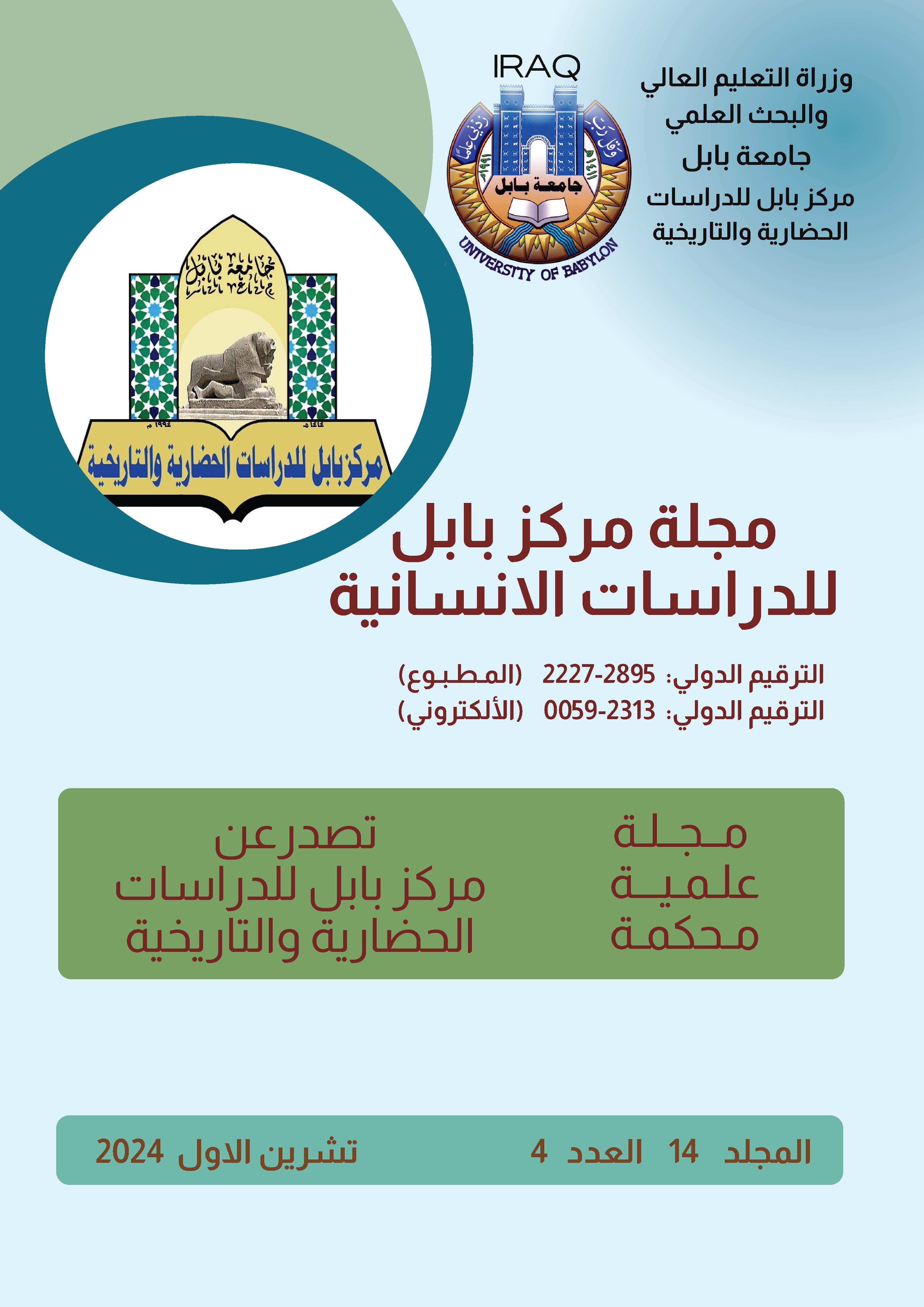الأسلوب في وصية عمر بن كلثوم التغلبي لبنيه
الكلمات المفتاحية:
الوصية , عمر بن كلثوم ، التغلبي . العصر الجاهلي ،الاسلوب.الملخص
ليس ثمّة مذهب أو اتجاه أسلوبّي بعينه، غلب على نصوص نثرنا العربي القديم عامة؛ إذ كان الأدباء ينّوعون مستويات أدائهم ضمن النصّ الواحد أحياناً، وفقاً لمقتضى الحال. ومن المعلوم أن القيمة الفنيّة للنصوص النثرية تتفاوت؛ إذ إنّ مفهوم الفنية نسبّي، يأخذ كلّ نصّ منه بمقدار، لذا فإنّ الأحكام أميل إلى التغليب والتعميم، بحسب التيّار السائد، أو الاتجاه العام. فالأساليب تتنوّع باختلاف الأنواع؛ ولكلِّ نوع أدبيّ رسومه وتقاليده الفنية والأسلوبية، التي ينبغي أن يُلتزم بها، بحسب ما عبّر عنه القدماء بـ(مقتضى الحال). فضلاً عن أن القيمة الفنية لأسلوبٍ ما، أو سمة بلاغية معيّنة، ليست مطلقة، بل تبدو ضمن السّياق الذي وردت فيه، من خلال تآزر عناصر النصّ وتلاحمها، شكلاً ومضموناً، لفظاً ومعنى وطبيعة الوصايا تتعدد بحسب مقام الموصي والوصية التي نقف عندها وصية اجتماعية .
وهي كالوصايا المتعلقة بالزواج، والمال، والصداقة، والعناية بالخيل وإكرامها، ومكارم الأخلاق كتهذيب اللسان، وتربية النفس، والحث على الصدق، والبذل والجود .
كشفت الوصية أن الجاهلين كانوا يعنون بتنميق أسلوبهم في الوصايا حتى يكون له وقع جميل، ويكون هذا عاملاً مساعداً على الإصغاء إلى الوصية ثم التأثر بها، ونرى الوصية تلتزم السجع، وتعني بالازدواج، والطباق، والجناس أما السجع فواضح في الوصية ..
فضلا عن ذلك طبيعة البيئة والمجتمع وانعكاسها على الأديب ، لاسيما أن الوصية مدار البحث هي لأحد شعراء الجاهلية المرموقين ( عمر بن كلثوم التغلبي ) يتناول البحث أسلوب الشاعر ليس بوصفه شاعراً وإنما ناثراً موجهً لأبنائه من خلال وصية فيها من النصح التوجيه والإرشاد .
فانقسم البحث إلى تناول الوصية بتعريف بشيء عن الشاعر ولم نطل لإدراكنا بأنه علم من أعلام الجاهلية وشعرائها ثم تعريف بالوصية عموماً بوصفها فنً نثرياً وتوضيح أهمية المنهج الأسلوبي والتعريف به وأنقسم البحث على ثلاث مستويات بحسب التأثير داخل الوصية فكان المستوى الأول الصوتي ثم المستوى الدلالي ثم المستوى التركيبي .مع خاتمة للبحث وقائمة بالمصادر والمراجع .







